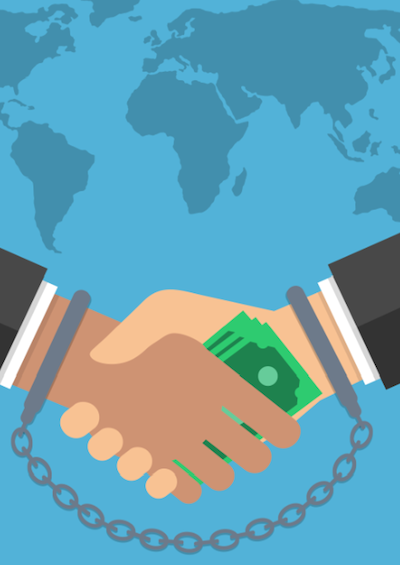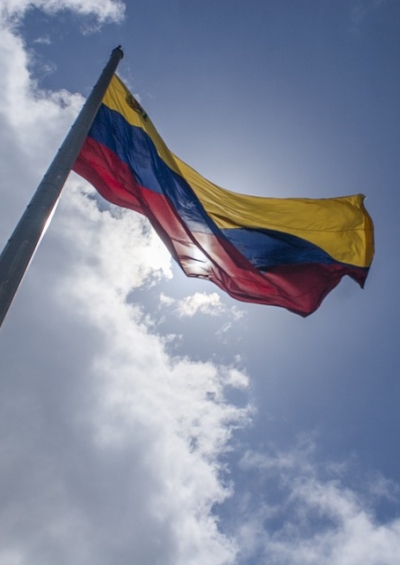The Double-Standard Raised by the Corruption Perception Index
Some of the countries that do best in Transparency International’s Corruption Perceptions Index are where kleptocrats place their dirty cash.
January 30, 2019

Denmark ranks Number 1 as the least corrupt in the Transparency International 2018 Corruption Perceptions Index published yesterday.
But note this: Denmark’s leading bank, Danske Bank, has won the “2018 Corrupt Actor of the Year award” from the Organized Crime and Corruption Reporting Project (OCCRP).
This is convincing proof that corruption, in its many manifestations, is universal.
Some of the countries that do best in Transparency International’s Corruption Perceptions Index — such as Singapore and Switzerland, ranked in third place, Luxembourg in ninth, the UK in 11th, and the United States in 22nd — are where kleptocrats and leaders of organized crime that dominate other countries and depress those countries’ social and economic development end up placing their dirty cash in banks, real estate, financial management firms, jewelry, gold and valuable art.
Procurement
The CPI, from its inception in 1995, has been a poll of polls, drawing its rankings from diverse surveys that look, above all, at corruption by governments.
This means that the prime focus is on public procurement, largely because that is where the money is – annual public contracting is estimated to be more than $9.5 trillion.
As its worst performers, the new Corruption Perceptions Index features countries at war and “failed states,” from Libya and Afghanistan to Somalia, Syria and South Sudan.
These are indeed countries where corruption is so rampant that it features in virtually every aspect of daily life. Law enforcement in these countries has failed.
These are also the countries where one finds the gravest humanitarian situations, involving many millions of people. The combination of overwhelming corruption, extreme violence and massive poverty, characterizes so many of the worst performers in the CPI.
Lest we want to go on and on with this predictable charade, the – basically unchanging — data calls for a major international response.
It must address the multiple acute ills in a comprehensive manner – a response that involves the United Nations, the leading Western governments and the many dedicated charitable organizations that are determined to assist. Such a coordinated response is absent today.
Can we really tolerate a situation where, predictably enough, next year’s CPI will almost certainly tell a similar story to that of the just issued 2019 edition — except that the scale of human suffering in the most corrupt nations will have intensified?
Citizen protests
Thankfully, at least a modicum of change is underfoot. Rarely before have we seen as many citizen-driven public protests against corrupt regimes as we see today – from Zimbabwe (ranked 160 out of 180 countries in the CPI) to Democratic Republic of Congo (161), to Sudan (172), and to Venezuela (ranked 168) where the Trump Administration has suddenly woken-up to the scale of chaos in the country and is now striving to oust the current regime.
We have seen anti-government protests, for example, in Hungary and Romania, ranked respectively at 64 and 61. The activism of citizens against corruption and anti-democratic regimes is contagious, but the cunning and greed of the kleptocrats continues to be formidable, all the more so when the media is being censored and activist pro-democracy groups face mounting intimidation.
The international community faces difficult challenges as it seeks to side with the citizen protests against the kleptocrats. There is the constant risk that international pressure assists in forcing out a viciously corrupt government, only to see sometime later that a new and corrupt government takes office. Zimbabwe seems a case in point.
There is a definite need to raise priority attention to this problem at the United Nations and in major transatlantic summit meetings. The problem has become all the more serious in terms of international security because the kleptocratic regimes are increasingly winning support from the governments of Russia and China.
But this is not just about pointing fingers in other countries’ direction. A key part of the problem is the double standard mentioned at the outset – that some key countries with good marks on corruption perception are key destinations – and profiteers – of all these corruption shenanigans.
The 22 ranking of the United States is probably accurate when it comes to public contracting, but it fails to reflect the extraordinary range of corruption across the highest levels of the Trump administration, or the excessive influence of special interest groups on U.S. elections.
The new CPI should be used to stimulate fresh and urgent discussions about combatting corruption, reducing humanitarian catastrophes and enhancing security. And, these discussions dare not overlook the roles that the “cleanest” countries in the CPI play in illicit finance.
Takeaways
Some of the countries that do best in Transparency International’s CPI are where kleptocrats place their dirty cash.
Can we really tolerate a situation where next year’s CPI will tell a similar story to that of this year’s edition -- except that the scale of human suffering in the most corrupt nations will have intensified?
Lest we want to go on and on with this predictable charade, the basically unchanging data of the CPI calls for a major international response.

